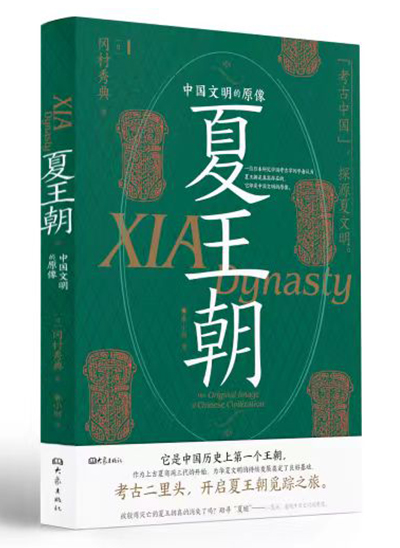A Japanese scholar’s view on Xia Dynasty

Xia Dynasty: The Original Image of Chinese Civilization
The questions “Did the Xia Dynasty (c. 21 century–16 century BCE) exist?” and “Does China have a 5,000-year history of civilization?” have long been subjects of intense interest among overseas archaeologists and sinologists. Xia Dynasty: The Original Image of Chinese Civilization, by Okamura Hidenori, an authoritative scholar in Japan dedicated to the origin and early development of Chinese civilization, represents a masterpiece of overseas scholarship on China’s Xia Dynasty.
The original Japanese edition, titled Xia Dynasty: Archaeology of Kingship Birth, was published in 2003 by Kodansha. The 2023 Chinese version delineates the real landscape of China’s earliest dynasty from the aspects of palace sites, ceremonial objects, and everyday artifacts by dint of historical documents and archaeological discoveries.
The title of the book clearly affirms the existence of the Xia Dynasty, indisputably the first dynasty in Chinese history, which is a well-established historical fact. In the first half of the 20th century, Chinese academia experienced a period of skepticism towards ancient history, with some scholars “questioning historical records” and the authenticity of the history of the Xia, Shang (c. 16 century–11 century BCE), and Zhou (c. 11 century–256 BCE) dynasties, and the era of Five Emperors recorded in many classics such as Records of the Grand Historian. Some even proposed that no historical records existed prior to the Eastern Zhou Dynasty (770–256 BCE).
In the 1920s and 1930s, the academic school of “doubt in antiquity,” represented by Gu Jiegang, put forward the theory of “Chinese ancient history created layers upon layers,” which cast doubt upon the existence of Xia. Although some scholars have refuted this view, doubts about the actual existence of the Xia Dynasty persisted due to the lack of contemporaneous literature from that era. Western scholars also began to doubt Xia’s existence from the late 19th and early 20th centuries, suggesting the Shang Dynasty was likely China’s first historical dynasty.
Since the founding of the PRC in 1949, great progress has been made in archaeological work in China, particularly in the excavation and study of sites like Erlitou, which have provided abundant evidence for the existence of Xia. The Xia-Shang-Zhou Chronology Project implemented at the end of the 20th century largely established the chronological framework of the Xia Dynasty and identified the Erlitou site as the capital of the middle and late Xia Dynasty. Since then, consensus within China’s archaeological community has gradually solidified, affirming the genuine existence of the Xia Dynasty. However, during this period, skepticism about the Xia Dynasty was still rampant in Western academic circles.
In this context, Okamura directly adopts “Xia Dynasty” as part of the book’s title, seeking concrete clues of Xia’s existence by rigorously sifting through fact and fiction. Supported by the latest Chinese archaeological discoveries, he argues that there was indeed a Xia Dynasty in state form prior to the Shang Dynasty.
Xie Zhong is a professor from the School of Marxism at Hunan University of Science and Technology.
Edited by YANG LANLAN
